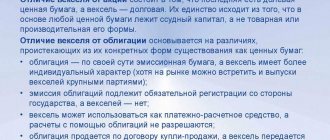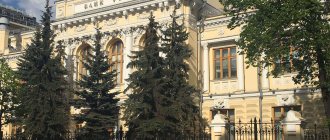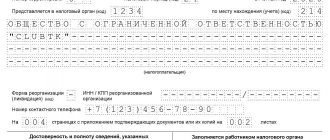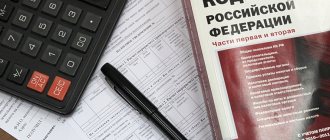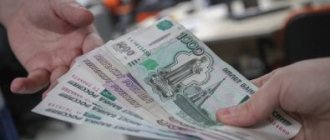Refinancing rate of the Central Bank of the Russian Federation 4.25%
The refinancing rate indicator has a great influence on many economic processes. The monetary policy instrument is a kind of indicator on the basis of which deposit and lending rates, penalties and fines are calculated in case of violation of the tax payment procedure. The size of the rate determines special payments to provide financial support to small and medium-sized businesses, and the amount of financial liability in case of violation of the schedule of payment of salaries to employees.
What is the refinancing rate
The refinancing rate determines under what conditions and at what interest rate banks will accept funds from the Central Bank of the Russian Federation. The key significance of the rate is that it will determine the interest rate at which clients will be able to apply for loans and deposits in Russian banks. No financial organization will provide borrowed funds below the indicator established by the Central Bank of the Russian Federation. Its size is strictly fixed and depends on the current economic situation in the country.
The indicator can be adjusted as follows:
- when inflation rises, the Central Bank decides to increase the indicator;
- When the inflation rate decreases, the interest rate decreases.
The refinancing rate is set by the Central Bank of the Russian Federation. Its size is determined by a number of factors:
- the state of the global financial market and domestic economy;
- the level of demand for loans, deposits, mortgages, loans among citizens;
- sanctions policy;
- inflation rate;
- volume of government procurement.
After analyzing all the factors and determining the indicator at the Board of Directors, information about the change in the rate is published in official sources and confirmed by the Resolution. The size of the bet can only be predicted, but it cannot be calculated using a predetermined formula.
The Bank of Russia decided to maintain the key rate at 4.25% per annum
On December 18, 2021, the Board of Directors of the Bank of Russia decided to maintain the key rate at 4.25% per annum. Inflation is higher than the Bank of Russia forecast and by the end of 2021 is expected to be in the range of 4.6–4.9%. One-time pro-inflationary factors have a more significant and lasting upward impact on prices against the backdrop of rising inflation expectations of households and businesses, as well as supply restrictions. The deterioration of the epidemic situation in Russia and in the world has a significantly less significant restraining effect on economic activity than in the second quarter. The situation in external financial and commodity markets has improved amid expectations of a faster global economic recovery due to progress in vaccine development. Disinflationary risks in 2021 no longer prevail to the extent they previously did, given the strengthening of short-term pro-inflationary factors and the risks of their longer-term effects. According to the forecast of the Bank of Russia, under the current monetary policy, annual inflation will be 3.5–4.0% in 2021 and will be close to 4% in the future.
Taking into account the high heterogeneity of current trends in the economy and price dynamics, the Bank of Russia will assess further developments of the situation and the potential for an additional reduction in the key rate. The Bank of Russia will make decisions on the key rate taking into account the actual and expected dynamics of inflation relative to the target, economic development over the forecast horizon, as well as assessing risks from internal and external conditions and the reaction of financial markets to them.
Inflation dynamics.
Inflation is higher than the forecast of the Bank of Russia and at the end of 2020 is expected to be in the range of 4.6–4.9%. This is largely due to the effect of one-time pro-inflationary factors in individual markets and the continued transfer of the previous weakening of the ruble into prices. However, these factors may have a longer-term upward impact on prices against the backdrop of rising inflation expectations of households and businesses, as well as supply restrictions. In November, annual inflation increased to 4.4% (after 4.0% in October), and, as of December 14, it was estimated at 4.7%. Indicators of the current growth rate of consumer prices, reflecting the most stable processes of price dynamics, according to Bank of Russia estimates, also increased in November and were close to 4% in annual terms.
The population's inflation expectations continued to rise, which is mainly due to rising prices for certain consumer goods and exchange rate volatility. Price expectations of enterprises have increased in previous months and remain at an elevated level, formed under the influence of rising costs. Professional analysts' expectations regarding inflation in the medium term are anchored around 4%.
Although the restraining influence of domestic demand on price dynamics remains, in the short term it is compensated by pro-inflationary factors. These include supply-side factors, including an emerging labor shortage in a number of specialties and additional costs for enterprises to comply with anti-epidemic standards, as well as secondary effects associated with rising inflation expectations. Under these conditions, the impact of one-time pro-inflationary factors on price dynamics may be longer-lasting. As their influence wanes, consumer price growth will slow. According to the forecast of the Bank of Russia, under the current monetary policy, annual inflation will amount to 3.5–4.0% in 2021 and will remain around 4% in the future.
Monetary conditions
in general, have not changed significantly since the previous meeting of the Board of Directors of the Bank of Russia. Loan and deposit rates have largely stabilized, and lending continued to expand. The change in OFZ yields for different periods was uneven. Yields on medium-term OFZ bonds decreased slightly as the situation in financial and commodity markets improved, including against the backdrop of expectations for a faster global economic recovery due to progress in creating vaccines. Along with soft monetary conditions, the dynamics of lending are influenced by preferential programs of the Government, as well as regulatory easing. When making decisions on the key rate, the Bank of Russia will assess how much the termination of these anti-crisis measures will affect monetary conditions.
Economic activity.
Current indicators of economic activity indicate a pause in economic recovery in the fourth quarter. However, the deterioration of the epidemic situation in Russia and in the world has a significantly less significant restraining effect on the economy than in the second quarter. This is due to the targeted nature of restrictive measures and the adaptation of citizens and enterprises to new conditions. Taking this into account, as well as higher-than-expected data for the third quarter, the decline in GDP in 2021 could be about 4%.
In the spring of 2021, a steady resumption of growth in the Russian economy is expected as the morbidity situation normalizes. The medium-term trajectory of economic growth will be significantly influenced by the dynamics of the coronavirus pandemic in Russia and in the world, the nature of the recovery in private demand in the face of possible changes in the behavior of the population and business, as well as the upcoming fiscal consolidation. Loose monetary policy will continue to support the economy next year.
Inflation risks.
Disinflationary risks in 2021 no longer prevail to the same extent as they previously did, given the strengthening of short-term pro-inflationary factors and the risks of their longer-term effect in the face of rising inflation expectations and associated secondary effects.
Short-term pro-inflationary risks are also associated with increased volatility in global markets, including under the influence of various geopolitical events, which may affect exchange rate and inflation expectations. Temporary difficulties in production and logistics chains, as well as additional costs for enterprises associated with protecting workers and consumers from the threat of the spread of coronavirus, may put upward pressure on prices. Pro-inflationary risks are created by the dynamics of domestic prices for certain food products under the influence of supply-side factors and the conditions of the relevant world markets.
Disinflationary risks for the base scenario are mainly associated with the further development of the situation with the coronavirus pandemic in Russia and in the world, the scale of possible measures to combat it and their impact on economic activity, as well as the speed of economic recovery and household incomes. Sustained changes in the preferences and behavior of the population, including a possible sustained increase in the propensity to save, may also have a moderating effect on inflation dynamics.
Uncertainty remains regarding the long-term structural consequences of the coronavirus pandemic for the Russian and global economies, in particular the scale of the decline in the potential of the Russian economy. Geopolitical factors, including worsening trade tensions, can also have a significant impact on the potential for global growth. The scale of deviation of the Russian economy from potential, in turn, is a determining factor for the medium-term dynamics of inflation.
Budget policy significantly influences the medium-term dynamics of inflation. In the base scenario, the Bank of Russia proceeds from the trajectory of fiscal policy reflected in the Main Directions of Budget, Tax and Customs Tariff Policy for 2021 and for the planning period of 2022 and 2023, as well as the stated deadlines for completing anti-crisis measures of the Government and the Bank of Russia.
Taking into account the high heterogeneity of current trends in the economy and price dynamics, the Bank of Russia will assess further developments of the situation and the potential for an additional reduction in the key rate. The Bank of Russia will make decisions on the key rate taking into account the actual and expected dynamics of inflation relative to the target, economic development over the forecast horizon, as well as assessing risks from internal and external conditions and the reaction of financial markets to them.
The next meeting of the Board of Directors of the Bank of Russia, at which the issue of the level of the key rate will be considered, is scheduled for February 12, 2021. The time for publishing a press release on the decision of the Board of Directors of the Bank of Russia and the medium-term forecast is 13:30 Moscow time.
When using the material, a link to the Press Service of the Bank of Russia is required.
Refinancing rate - table 2012-2021
| Period | Meaning, % |
| From 07/24/2020 to present | 4,25 |
| From 06/19/2020 to 07/23/2020 | 4,5 |
| From 04/24/2020 to 06/18/2020 | 5,5 |
| From 02/07/2020 to 04/23/2020 | 6 |
| From 12/13/2019 to 02/06/2020 | 6,25 |
| From 10/25/2019 to 12/12/2019 | 6,5 |
| From 09.09.2019 to 24.10.2019 | 7 |
| From 07/29/2019 to 09/09/2019 | 7,25 |
| From 06/17/2019 to 07/29/2019 | 7,50 |
| From 04/26/2019 to 06/17/2019 | 7,75 |
| From 12/16/2018 to 04/26/2019 | 7,75 |
| From 09/14/2018 to 12/16/2018 | 7,50 |
| From 03/26/2018 to 09/14/2018 | 7,25 |
| From 02/12/2018 to 03/26/2018 | 7,50 |
| From 12/18/2017 to 02/12/2018 | 7,75 |
| From 10/30/2017 to 12/18/2017 | 8,25 |
| From 09/18/2017 to 10/29/2017 | 8,50 |
| From 06/19/2017 to 09/18/2017 | 9 |
| From 05/02/2017 to 06/19/2017 | 9,25 |
| From 03/26/2017 to 05/02/2017 | 9,75 |
| From 09/19/2016 to 03/26/2017 | 10 |
| From 06/14/2016 to 09/18/2016 | 10,5 |
| From 01/01/2016 to 06/14/2016 | 11 |
| From 09/14/2012 to 12/31/2015 | 8,25 |
Refinancing rate forecast for 2021
According to the Bank of Russia, annual inflation remains at a consistently low level today (2.2% in February 2021), which may continue in the first half of the year, and by 2021 will not exceed 4%. Monetary conditions continue to soften, and the most likely trend is towards a further reduction in the key rate (refinancing rate) of the Bank of Russia in 2021 in order to move to a neutral monetary policy by the end of the year. Analysts talk about at least one more possible reduction in the refinancing rate of the Central Bank of the Russian Federation in 2021 under such conditions by the end of the year in the range of 6-6.5%, but not more than 7%.
Areas of influence of the Central Bank of the Russian Federation on bank credit products
Before deciding on the size of the refinancing rate, the Central Bank analyzes all the parameters that will be affected by the indicator:
- calculating the amount of payments for tax obligations;
- accrual of penalties for outstanding loans;
- payment of interest under the loan agreement;
- calculation of monetary payments for violation of obligations between lenders and borrowers.
For each indicator there is an established calculation formula. For example, to calculate the penalty for each day of delay, a value of 1/300 of the refinancing rate is used:
Penalty = debt × (refinancing rate ÷ 300) × number of days of delay
If the refinancing rate changed during the billing period, then the penalty rate is calculated for each period separately.
Central Bank meeting on the key rate in 2021 - schedule
The decision to change the key rate is made by the Board of Directors of the Bank of Russia. Its meetings are scheduled for all 12 months. That is, the schedule for 2021 has been developed in advance.
| Date of the meeting of the Board of Directors of the Bank of Russia | Note |
| 02/07/2020 | It was decided to lower the rate by 0.25% |
| 03/20/2020 | It was decided to leave it at 6.0% |
| 04/24/2020 | It was decided to lower the rate by 0.50% |
| 06/19/2020 | It was decided to lower the rate by 1.0% |
| 07/24/2020 | It was decided to lower the rate by 0.25% |
| 09/18/2020 | Maintained at the same level |
| 10/23/2020 | Maintained at the same level |
| 12/18/2020 | Maintained at the same level |
It is important to note that meetings of the Board of Directors do not always take place according to schedule. They may be unplanned. In particular, such a case was recorded in 2014. When the key rate was urgently raised by 6.5 percentage points.
After this, a gradual decline has been observed since 2015. The regulator reduced it without sudden jerks. Mostly by 0.25-0.5%. Although with a slight fluctuation at the end of 2021, the downward trend in rates continued into 2021.
One-day refinancing rate of the National Bank of the Republic of Belarus
The indicator is used mainly when calculating the amount of penalties (fines, etc.) paid both to organizations (for example, if the counterparty did not fulfill its obligations under the contract) and to the state (for late payment of taxes and other obligatory payments ).
To calculate the one-day refinancing rate, the annual rate should be divided by 365/366 (for a regular or leap year, respectively) or by 360 (the conditional number of days in a year). If the annual rate is 9% (this value is current at the time of preparation of the article), then the one-day rate is 9/360 = 0.025%.
Let’s say a company is late with a payment to a counterparty in the amount of 20,000 rubles, delaying it by 7 days. If the contract specifies that for every day of delay a penalty should be charged in the amount of the one-day refinancing rate based on the amount of debt, then the calculation will look like this:
20,000 rubles x 7 days x 0.025% = 35 rubles
The total amount of penalties for 7 days of delay will be 35 rubles, if calculated based on the one-day refinancing rate.
What is affected by the dynamics of the indicator?
When the rate is lowered, the economy receives an additional incentive for development. This is due to the reduction in the cost of credit resources, which are becoming more accessible to both the corporate sector and the population. In the first case, production, logistics, and other areas of activity are developed using borrowed funds; in the second, goods and services are purchased, which contributes to economic development.
When the refinancing rate increases, economic development slows down. This is due to the rise in cost of credit resources and, accordingly, a decrease in their availability for the population and the corporate sector. Typically, the National Bank uses this measure to suppress inflation and devaluation expectations, stabilize the monetary market, and eliminate imbalances in the country’s economy, especially during periods of economic crises.
Basics
Another name for the refinancing rate of the Central Bank of the Russian Federation is the discount rate. It is measured as a percentage. This indicator is set by the Central Bank. It is also the Bank of Russia.
It is one of the key factors in the economic environment. Its main goal is to show how much a loan from the main bank of the country costs for an ordinary bank. But not only. It is also actively used for tax purposes, as well as for calculating sanctions against both controllers and payers - penalties at the refinancing rate and fines. It is directly related to the delay in the return of mandatory payments. Therefore, every accountant must operate with the most accurate and up-to-date data on its meaning.
Sometimes the refinancing rate serves as a guideline for interest for deferment or installment payment of taxes (clause 4 of article 64 of the Tax Code of the Russian Federation). In addition, interest for the investment tax credit is calculated on its basis.
It should be noted that some time ago the Central Bank of the Russian Federation introduced a similar indicator - the key rate, which confused and confused many practitioners. Particular difficulties arose when it was necessary to find out the amount of interest on a controlled debt, which made it possible to reduce income tax. There were reasonable doubts about which rate to focus on – the key rate or the refinancing rate. This was not clear from the text of the relevant rules of the Tax Code.
But recently all doubts have been dispelled. The fact is that from 2021 these two indicators are unified. The following approach was chosen: from January 1, 2016, the refinancing rate was equal to the key rate for a specific date. Since that time, the Central Bank of the Russian Federation has not separately determined the percentage of the refinancing rate. Simply put, they will change simultaneously.
